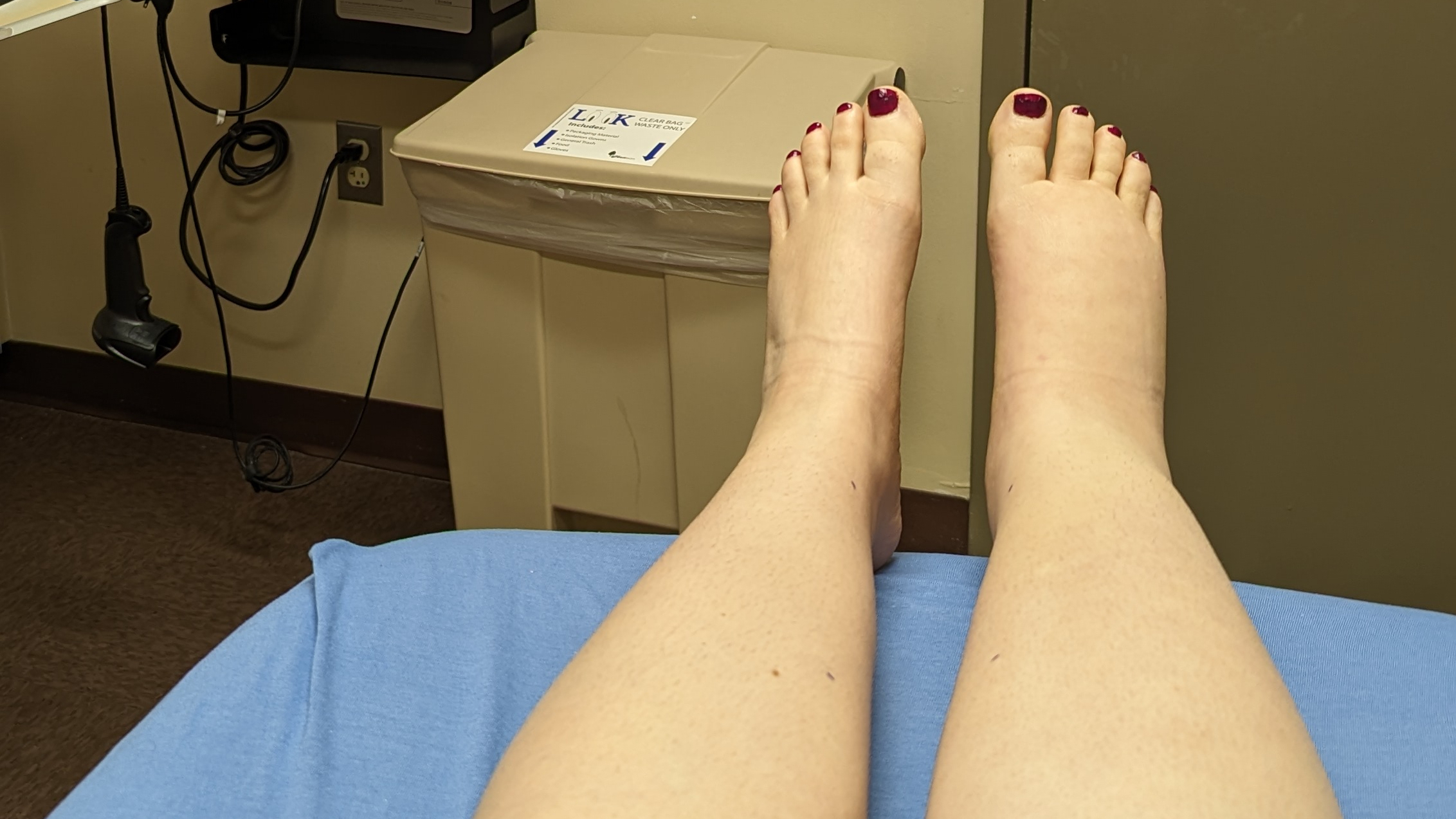The other day I began a four week process in which my affected limb is wrapped in a series of bandages and foam padding to create compression. The goal is to get my leg down to the smallest size possible so that I can be measured for a new compression garment. The smaller the measurements, the tighter the garment will be – and the better the swelling will be managed!
So what exactly does wrapping entail?
First, the lymphedema therapist took out a large sheet of foam padding. The foam, when wrapped under tight bandaging, helps to contour and compress the leg. She measured alongside my leg and foot and cut out a couple different pieces: an arch pad, a front piece, and a back piece. (These will be used later.)

Next, she wrapped my leg in Artiflex cotton batting, like the kind you’d use to keep a cast in place. This went from the bottom of my toes all the way to my knee.

After that, she put the foam pieces on, wrapping them loosely in place with a regular Ace bandage.

After that, she individually wrapped the first four toes of my foot.

Next come the bandages! The lymphedema therapist used four rolls of Rosidal short stretch bandages – two 8 centimeter and two 10 centimeter rolls. She wrapped my leg with tighter compression at the bottom, the gradient compression helping to move the lymph upwards.

The final product:

I go to the clinic almost every day for four weeks, and each day we do the same: unwrap, perform manual lymph drainage, re-wrap. It’s only been three days but I’ve already noticed a difference when the bandages are removed – a lot of the swelling is down and I’m really excited to get fitted for my new garment. Wrapping is a worthwhile process to undertake, something I’d definitely recommend talking to a lymphedema specialist about!
What are your experiences with wrapping? Have you found it to be helpful?




Leave a Reply to rosieCancel reply